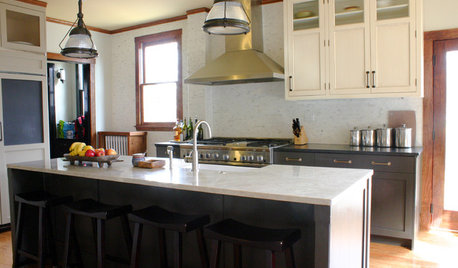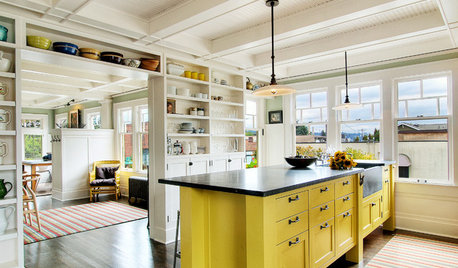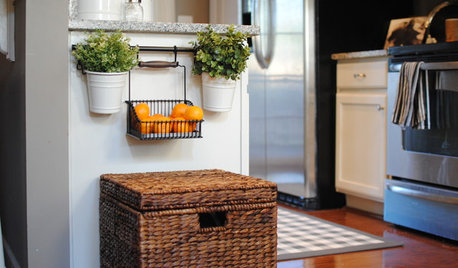do you think repeated tilling is harmful?
Lauren W. (z5b - CNY)
8 years ago
Featured Answer
Sort by:Oldest
Comments (52)
bossyvossy
8 years agobossyvossy
8 years agoRelated Discussions
I think I tilled too early... Now what?
Comments (8)Sarabell Are you worried that rains will pack the soil down or winds will dry it out? Can you find some organic mulching material to cover your planting areas? That should keep the soil moist and friable, and you can dig through the mulch to plant. If you added in a good amount of compost, I'd think you'd be okay. Your compost will have blending time with the other soil, and I'd think that just pulling back the mulch and loosening your "tilled area" with a hoe when it's time to plant ought to do the job....See MoreWhen to till if you till?
Comments (13)A community garden is a horse of a different color. What most of us do in our gardens may not work. Some people will grow kale so the earliest you could till is early winter. I am not a big fan of hauling and spreading mulch to keep weeds under control until people plant in spring. I prefer to plant flax in the very very early spring. You can mow it and plant no-till or shallow till in the spring. Seven top turnips greens can also be planted very very early as a cover but require a bit more till to uproot. At least people could eat it. Alternate strips of both could provide choices. Here is a link that might be useful: Crop Rotation...See MoreHow many repeat bloomers to you have that actually repeat?
Comments (35)thks , i learned a lot and sloved my problem. by the way,there are some hot DVD movies i really like and want to share to you--- Entourage DVD 1-6 http://www.stardvdcity.com/entourage-seasons-16-dvd-boxset-p-420.html Entourage DVD set http://www.stardvdcity.com/entourage-seasons-16-dvd-boxset-p-386.html Queer as folk DVD set http://www.stardvdcity.com/queer-as-folk-seasons-15-dvd-boxset-p-329.html Queer as folk DVD 1-5 http://www.stardvdcity.com/queer-as-folk-seasons-15-dvd-boxset-p-330.html Boston legal DVD 1-5 http://www.stardvdcity.com/boston-legal-seasons-15-dvd-boxset-p-231.html Boston legal DVD set http://www.stardvdcity.com/boston-legal-seasons-15-dvd-boxset-p-233.html Boston legal DVD boxset http://www.stardvdcity.com/boston-legal-seasons-15-dvd-boxset-p-232.html i believe you will love them! it really has amazing plot , wonderful screen, and also nice musics. we can't miss them!!! Here is a link that might be useful: star dvd city...See MoreI think I harmed by repotting
Comments (3)Cacti usually don't turn yellow when they rot, brown/black is more typical, but I have occasionally seen cacti turn yellow and then die. Is it shriveling too? Did you water it directly after repotting? (That is always a risk). Does the new dish have a drainage hole? Maybe you should unpot it again and check the lower part of the plant for mushy/discoloured areas. Do you have a picture of it?...See Moredigdirt2
8 years agolast modified: 8 years agogrubby_AZ Tucson Z9
8 years agoUser
8 years agowayne_5 zone 6a Central Indiana
8 years agoLauren W. (z5b - CNY)
8 years agoUser
8 years agorgreen48
8 years agolast modified: 8 years agodonna_in_sask
8 years agotcstoehr
8 years agodefrost49
8 years agodigdirt2
8 years agowayne_5 zone 6a Central Indiana
8 years agoUser
8 years agolast modified: 8 years agorhizo_1 (North AL) zone 7
8 years agodigdirt2
8 years agoLauren W. (z5b - CNY)
8 years agogumby_ct
8 years agodefrost49
8 years agogumby_ct
8 years agolast modified: 8 years agodefrost49
8 years agonancyjane_gardener
8 years agojimmy56_gw (zone 6 PA)
8 years agogumby_ct
8 years agolast modified: 8 years agowayne_5 zone 6a Central Indiana
8 years agogumby_ct
8 years agoPumpkin (zone 10A)
8 years agogumby_ct
8 years agowayne_5 zone 6a Central Indiana
8 years agojimmy56_gw (zone 6 PA)
8 years agojimmy56_gw (zone 6 PA)
8 years agogumby_ct
8 years agodigdirt2
8 years agogumby_ct
8 years agolgteacher
8 years agowayne_5 zone 6a Central Indiana
8 years agogumby_ct
8 years agojimmy56_gw (zone 6 PA)
8 years agodigdirt2
8 years agolast modified: 8 years agogumby_ct
8 years agolast modified: 8 years agodigdirt2
8 years agogumby_ct
8 years agowayne_5 zone 6a Central Indiana
8 years agolast modified: 8 years agodigdirt2
8 years agogumby_ct
8 years agolast modified: 8 years agotishtoshnm Zone 6/NM
8 years agojimmy56_gw (zone 6 PA)
8 years agowayne_5 zone 6a Central Indiana
8 years ago
Related Stories

COTTAGE STYLEDecorating a Cottage? Think Flea Market Style
Hit up swap meets and junk shops for furniture that’s comfortable, beautiful and full of stories
Full Story
LIFEHow to Outsmart Backyard Critters
Learn to think like a raccoon, skunk or squirrel to keep your home safe and your garden intact
Full Story
GARDENING AND LANDSCAPINGHow to Make a Pond
You can make an outdoor fish paradise of your own, for less than you might think. But you'll need this expert design wisdom
Full Story
LIFEThe Polite House: How to Deal With Noisy Neighbors
Before you fly off the handle, stop and think about the situation, and follow these steps to live in harmony
Full Story
HOUSEKEEPINGTackle Big Messes Better With a Sparkling-Clean Dishwasher
You might think it’s self-cleaning, but your dishwasher needs regular upkeep to keep it working hard for you
Full Story
DECORATING GUIDESBudget Decorating: How to Decorate Smart and Slow
To make the most of your decorating dollar, forgo the disposable stuff, think vintage and free first and give yourself a splurge
Full Story
LIFEHow to Build Your Housekeeping Muscle
Train yourself to clean and organize until the routine becomes second nature with this step-by-step approach
Full Story
KITCHEN DESIGNHow to Lose Some of Your Upper Kitchen Cabinets
Lovely views, display-worthy objects and dramatic backsplashes are just some of the reasons to consider getting out the sledgehammer
Full Story
KITCHEN DESIGNEasy Green: 10 Small Kitchen Changes to Make Today
Taking small steps in going green can lead to big results over time, and starting in the kitchen is a smart choice
Full Story
LIFEA Therapist’s Guide to Dealing With Conflict at Home
Piles of laundry and dirty dishes are a part of cohabitating. Here’s how to accept it and move forward
Full Story


digdirt2